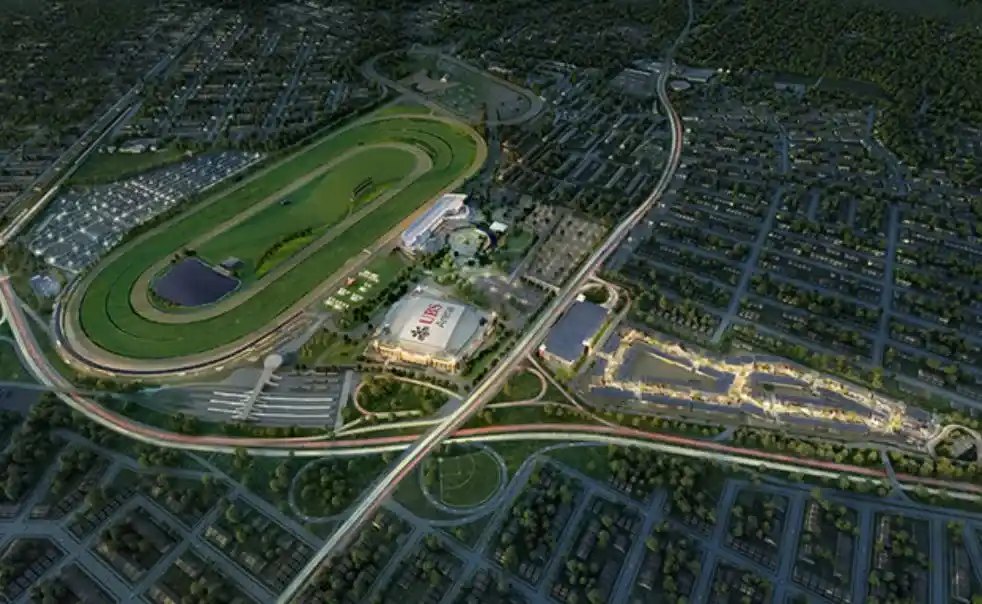Belmont Park and Pimlico Revamp to Strengthen Community

Elle
Jan 23rd 2025
Likes
Share:
Belmont Park in New York and Pimlico Race Course in Baltimore are two of the main race track redevelopment projects focusing on the massive transformations that are currently taking place. Specifically, the whole renovation process is targeted at mainly modernizing the infrastructure, adding value to the fan experience by improving it and enhancing connectivity with the surrounding districts. The new upgrades’ primary objectives were sought to assure the long-term survival of the equestrian sport and simultaneously introduce contemporary features to the infrastructures that historically are the most well-recognized.
Belmont Park’s $455 million race track redevelopment, under the direction of the New York Racing Association (NYRA), is unforgettable and may mark the venue’s new beginning. The stage house to be replaced was built in the year 1968 and was, as a result, better suited to current conditions. The renewed construction will exude a refined and sleek aesthetic with an abundant use of glass. Furthermore, the establishment will have a smaller size and require less power but will have a better layout which will enable the guests to amuse themselves fully.
Construction is well underway, with four racetracks being rebuilt. These include a new synthetic Tapeta surface to accommodate year-round racing and training. Glen Kozak, NYRA’s executive vice president of operations and capital projects, highlighted the project’s scope while touring the site. He pointed out ongoing developments, such as the addition of tunnels to the infield, which will allow spectators access to new spaces for the first time. The facility is expected to open in September 2026, with the Belmont Park Stakes being temporarily relocated to Saratoga Race Course in the interim.
Upgrades include advanced drainage systems, a computerized track base mixer, and increased internet capacity to improve broadcasting and operations. These improvements will bring about fewer scratches in the races and will make the experience of horses and their handlers more connected. Creating an entertainment spot will attract families as well as racing fans. NYRA CEO Dave O’Rourke has taken time and again to drive in the significance of setting up an environment that is readily available and has the capacity to cater to equestrians as well as entire families. The league will be a view of the stars of the industry
Revenue strategies for Belmont Park include naming rights, premium seating options, and expanded sponsorship opportunities, supporting financial sustainability while offering a range of choices for fans.
Currently, the Pimlico Race Course, where the Preakness Stakes is held, is about to become a $400 million project to recover its luxury as a much loved racing venue that can’t be a bad competitor. Founded in 1870, Pimlico is the second-oldest racetrack in the United States and its history was surrounded by tremors at different times, including the feeble infrastructure problem. It is operated by an entity called the Maryland Thoroughbred Racetrack Operating Authority which holds most of the assets of the venue.
Once the 150th Preakness Stakes in the spring has passed, the knocked-down buildings will open the door to new buildings with the latest technology. While the building is under construction, Laurel Park will first host the Preakness, and then it will be back at Pimlico in 2027.
The new design, also led by Populous, will introduce features to attract Derby-winning horses and their connections. A premium area known as the Preakness Enclave will provide exclusive amenities for horse owners, trainers, and their teams, aiming to encourage greater participation in the Triple Crown series. The race track redevelopment reflects a commitment to maintaining Pimlico’s prominence in horse racing while creating a welcoming environment for visitors and the local community.
Both venues are reducing the size of their main grandstands, using temporary structures to accommodate larger crowds during major events. This approach balances functionality with cost-effectiveness. Naming rights, sponsorships, and a variety of seating options are integral to the financial strategies of both projects. Upgrades to plumbing, electrical systems, and internet connectivity will support improved operations and better experiences for fans and participants. Redesigned layouts will create a more open and accessible environment, building stronger connections with the neighborhoods surrounding each venue.
At Belmont Park, the introduction of a synthetic track surface will facilitate year-round racing, while new infrastructure will support more reliable broadcasting and smoother operations. These improvements aim to attract more participants and spectators while increasing revenue.
Similarly, Pimlico’s focus on creating a top-tier environment for horses and their teams underscores its dedication to remaining a key player in the Triple Crown series. Maryland’s investment in the track’s future ensures long-term stewardship and sustainability.
The race track redevelopment projects at Belmont Park and the Pimlico race course signify a shift in the horse racing industry, balancing tradition with innovation. By modernizing facilities and strengthening ties with their communities, these venues are setting a new standard for racing in the United States. With thoughtful planning and a focus on both functionality and visitor experience, Belmont Park and Pimlico race course are poised to thrive for decades to come.
